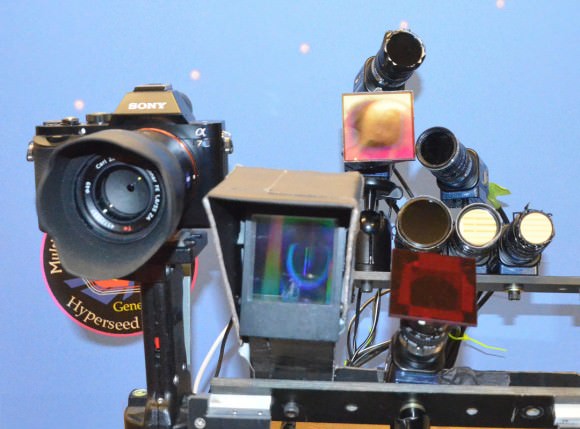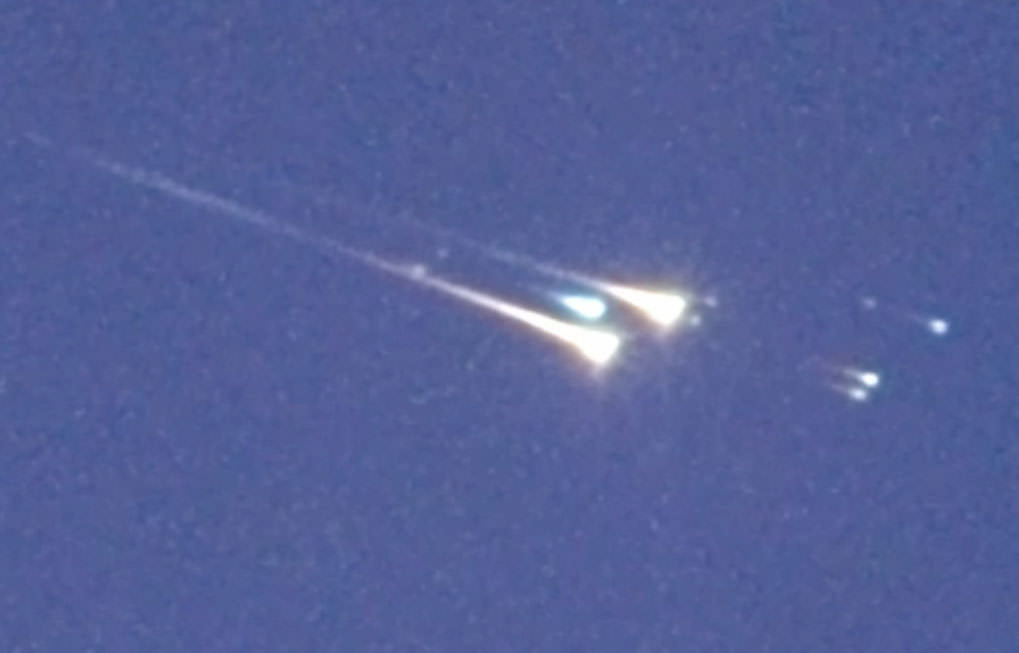Clouds hampered observations from the ground in Sri Lanka during the re-entry of WT1190F overnight, but a team of astronomers captured spectacular images of the object from a high-flying plane over the Indian Ocean very close to the predicted time of arrival.

The International Astronomical Center (IAC) and the United Arab Emirates Space Agency hosted a rapid response team to study the re-entry of what was almost certainly a rocket stage from an earlier Apollo moon shot or the more recent Chinese Chang’e 3 mission. In an airplane window high above the clouds, the crew, which included Peter Jenniskens, Mike Koop and Jim Albers of the SETI Institute along with German, UK and United Arab Emirates astronomers, took still images, video and gathered high-resolution spectra of the breakup.
Video and still imagery of WT1190F’s Reentry November 13, 2015
The group of seven astronomers hoped to study WT1190F’s re-entry as a test case for future asteroid entries as well as improve our understanding of space debris behavior. Photos and video show the object breaking up into multiple pieces in a swift but brief fireball. From the spectra, the team should be able to determine the object’s nature — whether natural or manmade.






One guy operating all those instruments through the window of an airplane during a meteor? I’m impressed not only if it succeeds, but already by the attempt. One can almost hear Peter cursing the cables in that photo.
I’ll go out on a limb and say WT1190F was a man-made object. First, it’s orbit would have been hard to accomplish by an asteroid. Not impossible, by highly unlikely. Second, the energy released by the object really wasn’t that great. It was on the order of a hollow object rather than soft asteroid.
BlackWolf,
You’re probably right. Most would agree at this point that it’s man-made. Spectra will give us a definitive answer.
Thanks for this followup and in advance for the next! I wonder how high they flew?
I note that the Sony on the left is the Mirrorless A7 with the Carl Zeiss lens, not a DSLR. It can output full resolution HDMI real time for monitoring, as well as having a Wifi remote control system and is much lighter than other cameras of that quality. A good choice for low light I have found.